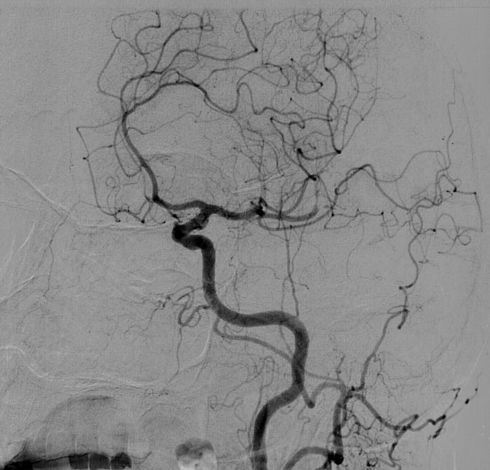About this service
Angiography is a test that uses an injection of contrast (X-ray 'dye') to visualise the coronary arteries of the heart using X-Rays. The test shows if the arteries have narrowed and helps decide what management the patient requires in the future.
The service is provided in the Cardiac Catheter Suite, Burtonwood Wing at Warrington Hospital.
Cardiac Catheter Suite
Burtonwood Wing
Warrington Hospital
Warrington
Cheshire
WA5 1QG
Telephone: 01925 662335 (appointments)
Referral for Cardiac Angiography is made by a Consultant Cardiologist.
Before taking an X-ray or CT scan, a liquid dye is injected into the blood vessels. When the test is on the arteries of the heart, an arterial sheath needs to be inserted into either the femoral artery (groin) or the radial artery (wrist).
To do this, local anaesthetic is injected at the access point. Access to the artery is gained using an introducer needle and a soft tipped wire is then fed into the artery via the needle. The wire remains in place and the needle is removed. A soft plastic tube (introducer) is then fed over the wire into the artery and the wire is then removed. Catheters can then be passed through the introducer around to the patient's heart, allowing contrast to be injected directly into the coronary arteries under X-ray gidance. The images are viewed on a monitor.
Before a catheter can be inserted into an artery, the surrounding area has to be numbed with a local anaesthetic.
An angiogram is used to check the condition of arteries. Angiography is used for a number of reasons:
- if the doctor is considering surgery, because it shows a clear picture of the blood vessels.
- it may reveal aneurysms (a bulge on an artery caused by a blood vessel wall becoming weaker).
- it can also be used to give a good view of the carotid artery and its branches in the neck and head. This is generally done to investigate a bleed in the brain (cerebral bleed) or identify the blood supply to a tumour. The angiogram can be used to show if an operation is necessary or possible.
- to look at the coronary arteries that send blood to the heart. The test is used to show if the arteries of the heart have narrowed.
- to look at the arteries in the legs and kidneys, as well as the aorta (the body's largest artery).
- to look at the liver to localise abnormalities, including tumours. This can be particularly useful when planning surgery.


